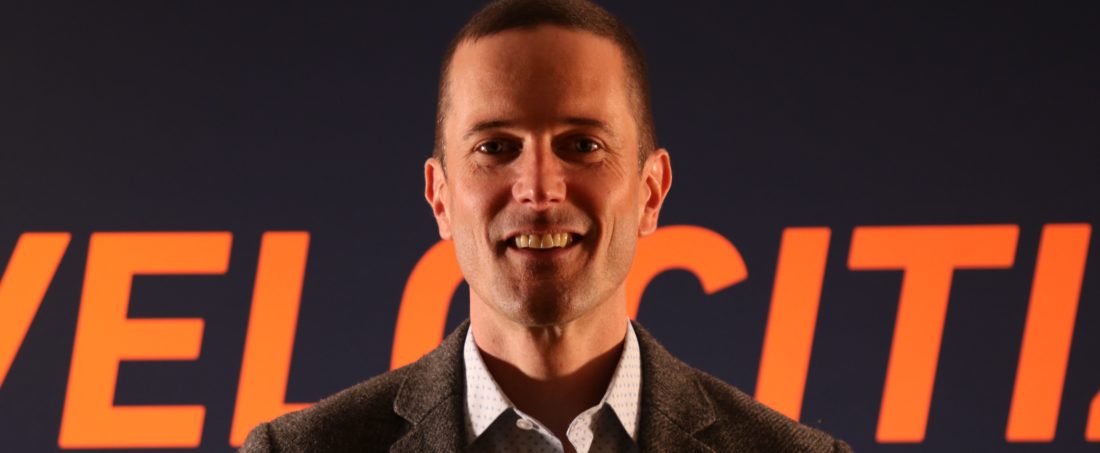We organize around the story, around the client’s story, and it simplifies things for us.
Jamey Boike is the Founder of Revere, a communications agency focused on emerging and high-growth technologies. Boike oversees relationships with the agency’s key technology clients including global brands and startups in IT, consumer tech and scientific computing.
In this episode of Velocitize Talks, Boike shares his insights into how PR has transitioned to telling their story in both traditional and digital formats while keeping an eye on brand messaging, audience and purpose.
Need for speed (3:11)
As an agency, we’ve got to be up on traditional media. We’ve also got to be up on everything that is coming down the pike and may only be around for months. In both of those areas, in media and in tech, speed has real intrinsic value.
The invention of new technology has drastically changed the way we communicate as well as the way we discover information. The dominance of a specific communication platform in the marketplace is lessening. Therefore, agencies need to understand how to use both preferred and traditional forms of communication when sharing brand information.
Digital accounts for over half of the daily average of the 12 hours and 9 minutes that U.S. adults spend using media. TV still gets a big share of the total at 3 hours and 35 minutes. However, the use of digital media, especially mobile, continues to increase while traditional media declines.
Earn it. Own it. (4:04)
The way that we stay focused on our client’s objectives is to keep their story at the center of our work.
A recent survey revealed that one-third of Americans are online all the time, shifting marketing efforts to digital PR. Digital PR can be thought of in four pieces: paid, earned, shared and owned media. Paid media can be great for driving traffic to your site but its reach and effectiveness can be limited due to the increasing use of ad blockers.
Earned media is essentially traditional PR; it’s not paid for. Shared media refers to social media or user-generated content (UGC). This requires authenticity and a combination of paid and organic posts. Owned media, on the other hand, is content created by the brand. Consumers may view this content as promotional and trust earned media more.
As with any strategic campaign, it is important to find a good mix of how to best tell the story. Where is the audience you’re trying to reach? How do they like to consume their information?
Brand journalism (5:45)
Media cycles are so compressed. PR people outnumber journalists six to one these days. Journalists don’t have time to keep up on all the stories and really dive in. It’s just very complex.
Between 1994 and 2014, newsrooms have shed over 20,000 jobs. This represents a 39% decline and fewer technical beat reporters to follow the details of specific industries. Boike has found that when working with a brand that has a nuanced story, there are several ways to share that information.
One way is to use social media to tell the story that makes sense for the brand and the audience. “Social media gives us a lot more control over what the message is and how the story unfolds,” says Boike. “The same is true in earned (media). If we decide to not work with a journalist, but instead produce our own op-eds and bylines, we seek out control for that reason.”
On purpose (8:29)
Every company out there has a reason to voice values and take a stance.
A Deloitte consumer survey found that purpose-driven companies see higher market share gains. In addition, they also grow three times faster on average than their competitors while achieving higher workforce and customer satisfaction.
Purpose-driven marketing is a very popular word in Boike’s line of work with any B2C client. However, he also stresses that it is just as important for the B2B clients that work with those consumer-facing businesses. “We’ve talked about the role of not just the direct participants in retail who might be selling guns (an issue a brand may take on as pivotal to their values) but in a broader ecosystem of payments transacting around gun sales,” says Boike.
If you think of the B2B ecosystem linking one company to another, purpose is important for not just B2C but also for B2B companies.
Stay on target (10:04)
It’s too easy to be too big. That’s where we see a lot of companies, particularly big companies, just missing on the high side with grandiose messages.
Microtargeting has become a big part of a digital marketer’s toolbox. Marketers have to focus in on a granular level to identify a target customer. From there, you need to know where to find them, engage them, and deliver the right content to them.
This has enabled startups to big businesses the ideal market segmentation and tailored campaigns for better conversion success. The more advanced microtargeting technology becomes, the more its adoption across multiple industry areas and disciplines will be.
Microtargeting is most successful when the customer feels that the brand is connecting on a more personal level. It’s important for brands to make sure their messages are authentic to connect with their audience and gain their trust.
For more information on Revere, check out their website and follow them on LinkedIn and Twitter at @RevereTeam. To stay up to date with Boike, follow him on LinkedIn.
This interview was originally recorded in Seattle in 2019.
